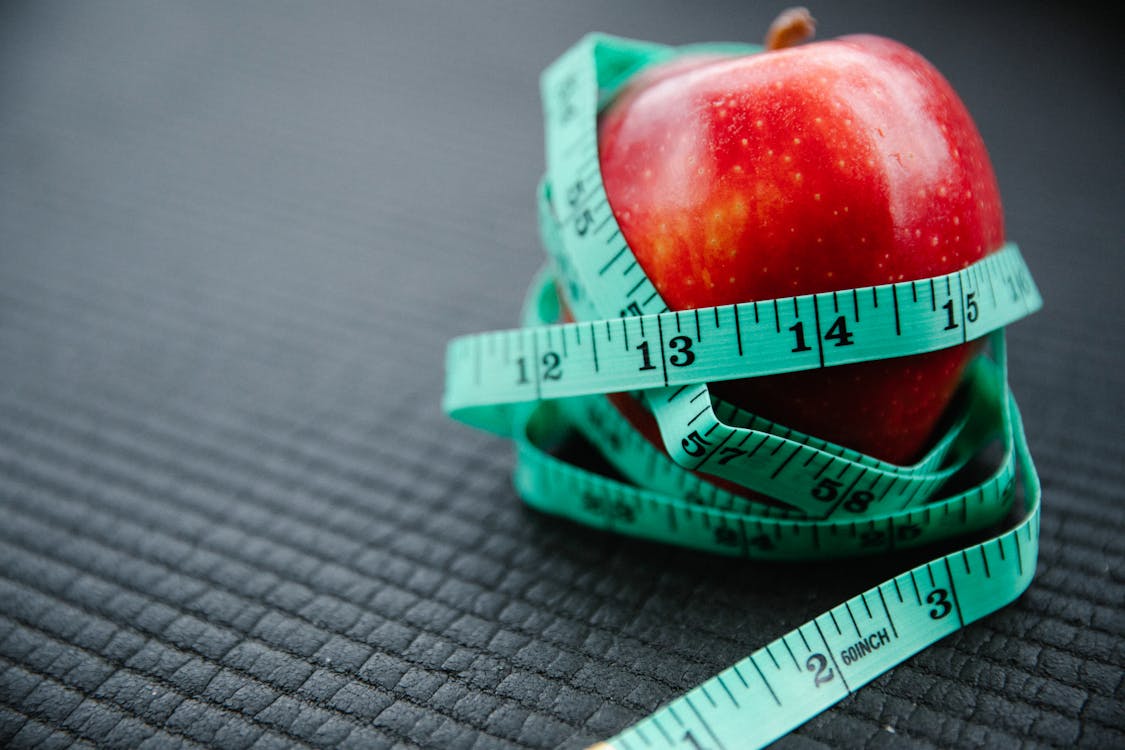
In an age where health is becoming an increasingly valuable asset, weight management has taken center stage. The global surge in weight-related health concerns, ranging from obesity to associated chronic conditions, has prompted a collective call to action. Beyond societal pressures, the necessity to prioritize our well-being has never been more critical. A key factor in this pursuit is the implementation of an effective weight loss plan. However, the idea of embarking on such a journey can be daunting. This article aims to illuminate the path towards healthier living by emphasizing the significance of a well-structured weight loss plan. Notably, this guide underscores the accessibility and advantages of adopting a free weight loss plan, making the prospect of achieving your health and fitness goals not only attainable but sustainable.
Understanding the Fundamentals of Weight Loss

As you embark on your journey towards a healthier lifestyle, it’s crucial to grasp the foundational principles that govern weight loss. By comprehending the inner workings of your body’s energy balance and metabolism, you can make informed decisions that will drive your progress.
Explaining the Calorie Balance Equation:
At the core of weight loss lies the simple yet profound concept of the calorie balance equation. This equation serves as the fundamental guideline for shedding excess pounds and achieving your desired weight. The principle is straightforward: to lose weight, you must create a calorie deficit, meaning you consume fewer calories than your body expends. This is achieved by striking a balance between the calories you intake through your diet and the calories you burn through physical activity and basic metabolic functions.
- Calories In vs. Calories Out: The equation hinges on the interplay between calories consumed and calories expended. When you consume fewer calories than your body needs, it taps into its energy reserves, primarily stored as fat, to make up for the deficit. Conversely, if you consistently consume more calories than you burn, your body accumulates excess energy in the form of fat, leading to weight gain.
The Role of Metabolism in Weight Management:
Metabolism, often used interchangeably with the term “metabolic rate,” is the intricate biochemical process that powers your body’s functions. It encompasses the energy your body expends to maintain basic bodily functions such as breathing, circulating blood, and regulating body temperature. Your metabolic rate is influenced by a variety of factors, including genetics, age, gender, body composition, and activity level.
Understanding your metabolism is pivotal in weight management. A higher metabolic rate means your body burns more calories at rest, which can facilitate weight loss. However, it’s important to note that metabolic rate can fluctuate over time and might slow down as you lose weight. This phenomenon is partly why many individuals experience weight loss plateaus.
Debunking Common Myths About Weight Loss:
As you embark on your weight loss journey, it’s essential to be equipped with accurate information and dispel common misconceptions surrounding weight loss. A few prevalent myths that need debunking include:
- Myth 1: Crash Diets are Effective: Rapid, extreme diets often yield quick initial weight loss, but they’re generally unsustainable and can lead to muscle loss and metabolic slowdown.
- Myth 2: Carbohydrates Should Be Eliminated: Carbohydrates are a vital energy source for your body. Focusing on complex carbohydrates from whole grains, fruits, and vegetables can support your weight loss journey.
- Myth 3: Skipping Meals Accelerates Weight Loss: Skipping meals may lead to overeating later in the day due to increased hunger. Regular, balanced meals are key to maintaining a steady metabolism.
Arming yourself with accurate knowledge about these fundamentals sets the stage for a successful weight loss journey. In the subsequent sections, we’ll delve into crafting your personalized free weight loss plan that incorporates these principles for lasting results.
How To Create Your Free Weight Loss Plan?

With a solid understanding of the fundamental principles of weight loss, it’s time to delve into the practical aspects of crafting a free weight loss plan tailored to your needs and preferences. This section will guide you through the essential steps to design a comprehensive and effective plan that supports your journey towards a healthier you.
Setting Realistic Goals:
- Short-term vs. Long-term Objectives: Establishing clear and attainable goals is a pivotal starting point. Differentiating between short-term goals (achievable within weeks to a few months) and long-term goals (achievable over several months or years) allows you to track progress and stay motivated. Your goals should be specific, measurable, achievable, relevant, and time-bound (SMART).
Assessing Your Current Lifestyle:
- Dietary Habits: Take an honest inventory of your current eating habits. Identify areas for improvement, such as reducing processed foods, sugary snacks, and excessive calorie intake. Consider incorporating more whole foods, lean proteins, and vegetables into your diet.
- Physical Activity Level: Evaluate your daily activity level. Are you mostly sedentary, moderately active, or highly active? This assessment will help determine the appropriate amount and type of physical activity to include in your weight loss plan.
- Sleep Patterns: Adequate sleep is often overlooked but crucial for weight loss. Assess your sleep quality and duration. Aim for 7-9 hours of quality sleep each night to support your weight loss efforts.
Designing a Balanced Diet:
- Emphasizing Whole Foods: Center your diet around whole, nutrient-dense foods. These include fruits, vegetables, whole grains, lean proteins, and healthy fats. These foods provide essential nutrients while keeping you satisfied.
- Portion Control: Pay attention to portion sizes to avoid overeating. Utilize tools like measuring cups, food scales, and your hand’s size as a reference to gauge appropriate portions.
- Importance of Nutrient Variety: Aim for a diverse array of nutrients by incorporating a range of colorful fruits and vegetables, lean proteins, and whole grains. This ensures you receive all the essential vitamins and minerals your body needs.
Incorporating Physical Activity:
- Cardiovascular Exercises: Engage in activities that elevate your heart rate, such as walking, jogging, cycling, or swimming. Aim for at least 150 minutes of moderate-intensity or 75 minutes of vigorous-intensity cardio each week.
- Strength Training: Building muscle not only boosts metabolism but also enhances overall body composition. Include strength training exercises 2-3 times per week, targeting major muscle groups.
- Flexibility and Balance Exercises: Incorporate activities like yoga or Pilates to improve flexibility, balance, and posture. These exercises contribute to your overall fitness and well-being.
Mindful Eating and Behavior Modification:
- Recognizing Triggers for Overeating: Identify situations, emotions, or cues that lead to overeating. Being aware of these triggers helps you develop strategies to manage them.
- Practicing Mindful Eating Techniques: Slow down and savor each bite. Pay attention to hunger and fullness cues, and avoid distractions while eating.
- Managing Stress and Emotional Eating: Find healthy ways to cope with stress and emotions, such as meditation, deep breathing, or engaging in hobbies. Minimizing stress-related eating supports your weight loss journey.
By addressing these components in your free weight loss plan, you’re laying a strong foundation for sustainable progress. In the following sections, we’ll explore the implementation and adaptation of your plan, ensuring that you navigate challenges and celebrate successes along the way.
Implementing and Adapting Your Free Weight Loss Plan

Now that you have a well-crafted weight loss plan in place, the journey to achieving your health and fitness goals truly begins. Implementing your plan and adapting it as you go are essential to maintaining motivation, overcoming obstacles, and ensuring consistent progress. In this section, we’ll delve into the key strategies for effectively implementing and adapting your free weight loss plan.
Starting Small and Gradually Progressing:
- Starting Small: It’s tempting to dive headfirst into dramatic changes, but taking small, manageable steps is more sustainable. Begin by making one or two adjustments at a time, such as swapping sugary snacks for fresh fruit or adding a 10-minute daily walk.
- Gradually Progressing: As you become comfortable with your initial changes, gradually increase the intensity and complexity of your efforts. This progressive approach prevents burnout and helps you build lasting habits.
Tracking Your Progress:
- Keeping a Food and Exercise Journal: Maintaining a detailed record of your meals, snacks, and physical activity can provide valuable insights into your habits. This journal can help you identify patterns, triggers, and areas for improvement.
- Utilizing Technology and Apps: Numerous apps and online tools are designed to streamline the process of tracking your food intake, exercise, and progress. These tools can provide a comprehensive overview of your efforts and make it easier to stay on track.
Overcoming Plateaus and Challenges:
- Adjusting Your Plan as Needed: It’s common to encounter plateaus, periods where weight loss slows or stalls despite your efforts. When this happens, consider adjusting your diet and exercise routine. Increase the intensity of your workouts, modify your calorie intake, or try new recipes to reignite progress.
- Seeking Support from Friends, Family, or Professionals: The journey to weight loss can be challenging, and having a support system can make a significant difference. Share your goals with friends or family members who can offer encouragement and accountability. If needed, consult professionals such as registered dietitians or personal trainers for expert guidance.
Celebrating Milestones and Non-Scale Victories:
Recognizing and celebrating your achievements is crucial for maintaining motivation. While scale victories are meaningful, don’t overlook the non-scale achievements. These might include increased energy levels, improved sleep, enhanced fitness performance, or positive changes in body composition.
The Importance of Sustainability

Embarking on a weight loss journey is not just about shedding pounds; it’s about cultivating lasting changes that improve your overall well-being. Sustainability is the cornerstone of a successful weight loss plan, ensuring that your efforts yield results that endure for the long haul. In this section, we’ll delve into the essential components that contribute to a sustainable approach to weight loss.
Avoiding Fad Diets and Extreme Measures:
- The Allure of Fad Diets: Fad diets promise rapid results by severely restricting certain food groups or drastically cutting calories. While they might yield short-term weight loss, they often lack essential nutrients and can be unsustainable, leading to rebound weight gain.
- The Pitfalls of Extreme Measures: Extreme measures, such as very low-calorie diets or excessive exercise, can be detrimental to your health and well-being. These approaches may lead to muscle loss, metabolic damage, and an unhealthy relationship with food and exercise.
Incorporating Treats and Indulgences:
- The Role of Treats: A sustainable weight loss plan acknowledges the importance of enjoying the foods you love, including treats and indulgences. Incorporating occasional treats can prevent feelings of deprivation and help you maintain a healthy relationship with food.
- Practice Moderation: While treats are a part of a balanced lifestyle, moderation is key. Savoring small portions of your favorite indulgences can satisfy cravings without derailing your progress.
Finding a Balance for Long-Term Success:
- Holistic Approach: Sustainable weight loss encompasses more than just diet and exercise. It considers your mental and emotional well-being, stress management, sleep quality, and overall lifestyle choices.
- Long-Term Mindset: Instead of fixating on rapid results, shift your focus to long-term success. Gradual, steady progress is more likely to lead to lasting changes in habits and body composition.
- Adapting and Flexibility: Life is dynamic, and your weight loss plan should be too. Be prepared to adapt your plan as circumstances change, such as during vacations, holidays, or busy periods.
- Education and Empowerment: Educate yourself about nutrition, exercise, and healthy habits. When you understand the “why” behind your choices, you’re empowered to make informed decisions that support your goals.
Sustainability isn’t just about what you do, but how you approach your weight loss journey. By prioritizing balanced choices, avoiding extremes, and fostering a positive relationship with food and exercise, you’re setting yourself up for enduring success. In the final sections of this guide, we’ll explore the significance of seeking professional guidance and the power of celebrating both milestones and non-scale victories.
Our best weight loss collection books:
Conclusion
Embarking on a weight loss journey is a transformative endeavor that reaches far beyond the number on the scale. Throughout this guide, we’ve explored the crucial elements of crafting a free weight loss plan that is not only effective but also sustainable in the long run. As we wrap up this journey of discovery, let’s recap the key takeaways and reinforce the importance of personalized, sustainable approaches to achieving your health and fitness goals.
Personalization is the cornerstone of success in the realm of weight loss. Cookie-cutter solutions rarely yield lasting results, as each individual’s body, preferences, and lifestyle are unique. By tailoring your plan to your own needs, you set the stage for sustained progress. Remember, it’s not just about dropping pounds; it’s about cultivating habits that enhance your overall well-being and vitality.
Sustainability, too, cannot be overstated. In a world full of quick fixes and extreme measures, the true path to success lies in nurturing balanced, healthy habits that can be maintained for years to come. Approaches that take into account your physical, mental, and emotional needs are more likely to yield results that withstand the test of time.
The journey of a thousand miles begins with a single step, and your journey to a healthier lifestyle is no different. The information and guidance provided in this guide are here to empower you to make positive changes, but the first move is yours to make. Whether you’re starting from scratch or recommitting to your goals, remember that progress is a series of small steps forward.
Today, as you reflect on the insights gained from this guide, we encourage you to take action. Set realistic goals, embrace mindful eating, engage in regular physical activity, and seek support from those around you. Every choice you make brings you closer to your vision of a healthier, happier you.
Remember, your journey is unique, and your path may have twists, turns, and challenges. But by embracing personalized, sustainable practices, you’re embarking on a transformative adventure that promises not only weight loss but also improved confidence, energy, and well-being. As you take these lessons to heart, may you find strength, determination, and a newfound sense of purpose on your path to a healthier and more vibrant life.



